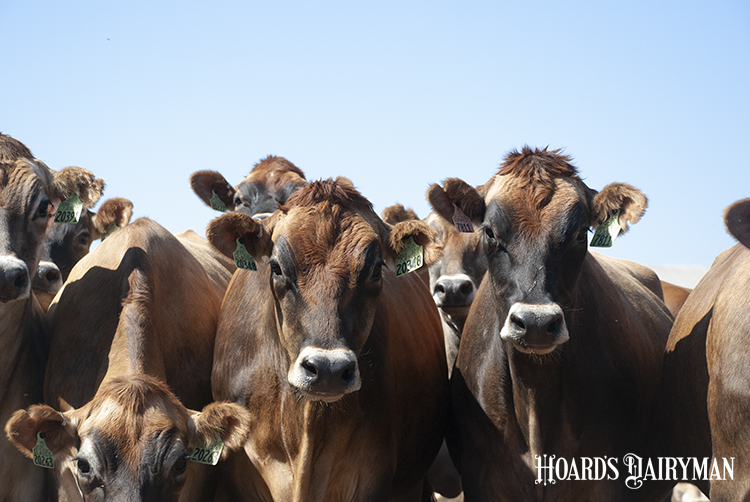
Standing tightly together or “bunching” is not a new behavior in cows, but it is one that is frustrating for many dairy farmers. It is not uncommon that, even in a barn with plenty of space and air flow, cows will group together and seem to only live in half the barn during the summer months.
The reason for this, according to University of Wisconsin-Madison veterinarian Nigel Cook, is that cows are by nature pasture animals. “When they are heat stressed or worried by flies, the natural reaction for cows is the come together and seek shade,” Cook said during a Dairyland Initiative “Assessing adult cow barn ventilation” workshop.
“That instinct to group together and go somewhere dark is still strong,” he continued. For cows housed indoors, that often means moving away from side walls and end walls and gathering in the middle of the barn. Cook noted that this can be more common in barns oriented north to south. In some situations, the cows could also be seeking out areas with faster moving air.
This is a problem because when cows are bunched together, they are not cooling. “Cows naturally dissipate heat when they stand,” Cook explained, as a standing cow has greater surface area for air movement to aid in cooling. “That is not happening when cows are all confined together in a packed space,” he noted.
To reduce bunching in dairy barns, Cook offered a few pieces of advice. For starters, a facility should have proper heat abatement in place, in the form of fans and sprinklers. This is important for both the holding area and the barn.
He said to close up end walls and avoid using transparent siding on ends of the barns, because this allows in more light and increases the variability of light intensity in the pen. Curtains can also be partially closed on sunny days to prevent bright areas in the barn.
Spraying for flies is helpful to reduce that nuisance, and again, it is important to ensure sufficient air exchange and cooling to prevent cows from feeling heat stressed in the first place.
Cook also reminded the audience that cows accumulate heat throughout the day. For this reason, their peak in body temperature and maximum heat stress does not occur at the same time at peak ambient temperature. Cows may not reach their highest body temperature until 6 p.m. to 10 p.m. at night.
Unfortunately, this poses a problem for many heat abatement systems that are set to run on a thermostat. “We often turn everything off just when actually we need to turn it on,” Cook said. This should be kept in mind when setting the controls for cow cooling to minimize the effects of heat stress late in the day.








